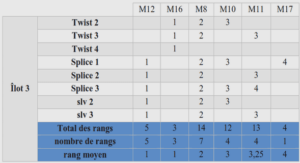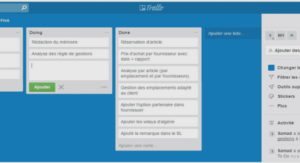FAB METHOD
Une méthodologie statistique appelée FAB est proposée dans ce manuscrit pour uti- liser tous les trois types les plus communs de données historiques dans une analyse régionale des aléas maritimes extrêmes. Cette méthode est fondée sur les principaux éléments de l’approche AFR proposée par Weiss (2014) pour les données systématiques et sur la notion de durée crédible. Ce nouveau concept est basé sur l’hypothèse crédible d’absence de tendance sur l’occurrence des tempêtes sur la période de collecte des données en Europe. La période d’observation locale et régionale des données historiques (appelée respec- tivement durée crédible locale et durée crédible régionale) peut être ainsi évaluée. La méthode FAB permet l’utilisation des trois différents types des données histo- riques grâce à la définition d’une nouvelle fonction de vraisemblance pénalisée. Cinq différents types de sous-fonctions sont considérés dans cette fonction de vrai- semblance : la vraisemblance des données systématiques, les trois vraisemblances pour chaque type de donnée historique et la fonction de pénalisation. Cette nouvelle fonction permet d’estimer les deux paramètres de la loi statistique régionale. Par ailleurs, une approche de pondération réalisée sur des paramètres liés à l’ana- lyse statistique est présentée par la méthode FAB. Cette approche permet d’identi- fier les seuils optimaux d’échantillonnage.
Statistical estimations of extreme coastal variables and, in particular of extreme sea levels and extreme skew surges, are necessary to protect coastal nuclear fleets from the risk of flooding. Several statistical methodologies applied to a sample of extreme observations allows the com- putation of return levels linked to high return periods. For sea levels and skew surges, local analysis does not permit generally to get reliable estima- tions of extreme values due to the limited recording period of observations (in our case of study, 40-50 years gauged on average). More extreme data are needed to extend extreme data samples and to reduce uncertainties on the extremes’ estimations. For this reason, Regional Analysis is currently one of the most used statistical approach that take advantage of the wide spatial avail- ability of tide gauges’ records to extend extreme data samples. Weiss (2014) proposes a detailed Regional Frequency Analysis approach (hereinafter its ap- proach is mentioned as RFA) for coastal hazards. The RFA method enables the pooling of dif- ferent sites considered as physically and statistically similar in a homogeneous region. In this way, extended regional extreme data samples in which a frequentist statistical analysis is ap- plied are created. Being regional extreme data sample biggest than local extreme data sample, regional extreme estimations are generally linked to lower uncertainties than local extreme es- timations.
More recently, several studies on the use of historical data in a local statistical analysis of ex- treme sea levels (Bulteau et al., 2015) and extreme skew surges (Hamdi et al., 2015) show that these past observations can improve extremes’ estimations. In fact, representing typically very strong events not recorded by a gauge, historical data cannot be neglect in a statistical analysis of extreme events. Unfortunately, the RFA approach can be applied only to time series of gauged data (hereinafter called as systematic data) and not to historical data. In order to be correctly applied, RFA method requires the knowledge of the observation period linked to the extreme data sample. Past observations are frequently linked with any period of observation because they do not come from continuous time series of data. No information in what happened before and after a his- torical event is usually available. In addition, they might be found in different types of data (for more details see Chapter 2) that cannot be used in a RFA application. Facing these issues, a method called hereinafter FAB (from the name of the authors Frau, An- dreevsky and Bernardara) is developed in this manuscript. Preserving the main concepts of the RFA approach, it allows the use historical data in the statistical analysis by the new definition of the local and the regional credible duration. This concept enables the estimation of the cred- ible period of the past observations. Moreover, all of the three types of historical data can be used in the FAB application through the definition of two different likelihoods for systematic and historical data. Frequentist or Bayesian estimations can be computed through the applica- tion of this method.



